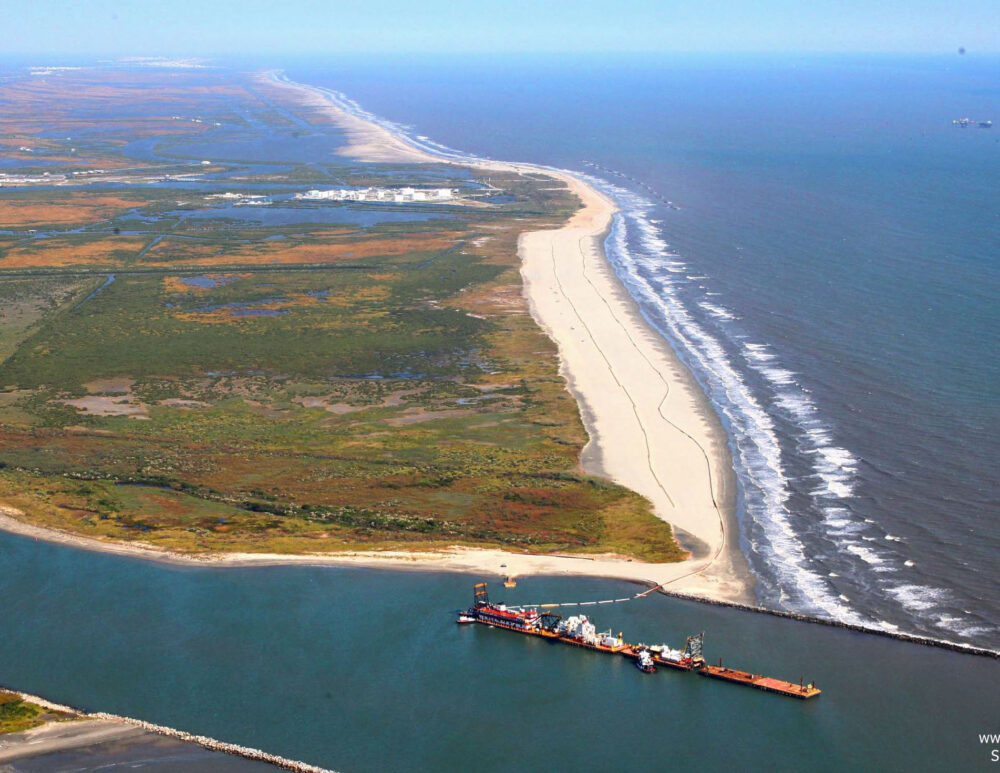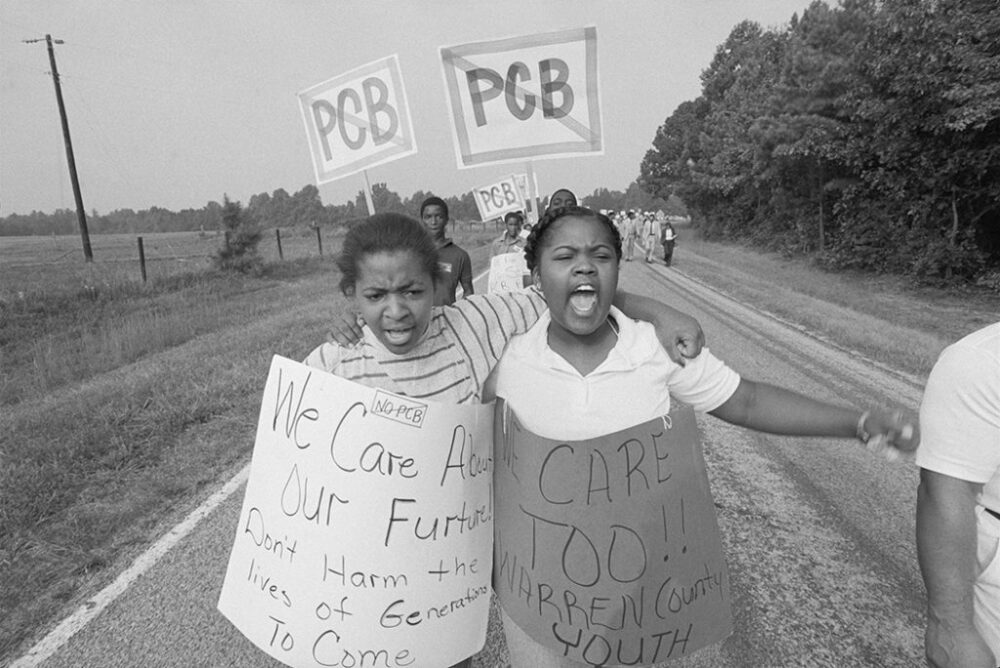We have much more to do and your continued support is needed now more than ever.
Teachers Explore Climate Resilience Education at RiSC Summer Professional Learning Institute
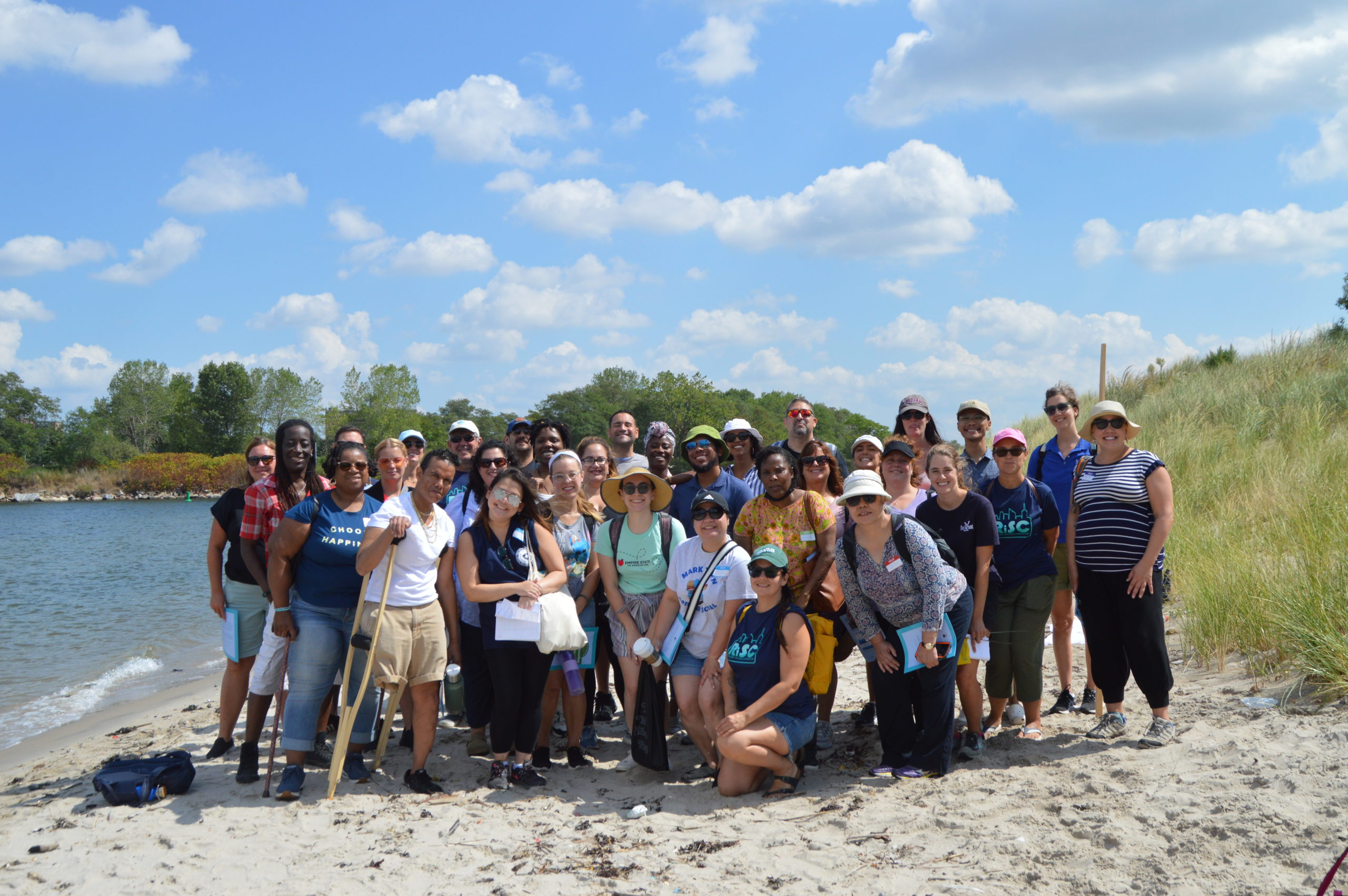
Resilience has become a buzzword, but what does the term really mean, especially in relation to the climate crisis, and how can it be discussed in the classroom? This was one of the questions a group of 28 teachers from across New York City explored during a two-day professional learning workshop hosted by the National Wildlife Federation for its Resilient Schools Consortium (RiSC) program. The institute took place in Brighton Beach, Brooklyn — an area pummeled by Superstorm Sandy in 2012.
Equity, environmental racism, and climate justice — key themes in the newly revised RiSC program and curriculum — were prominent topics explored during the workshop. The two-day event began with an activity to gauge peoples’ perceptions about who is most affected by climate change.
While some teachers felt that all people were at equal risk of harm from climate impacts in their community, others remembered the people who drowned in illegal basement apartments after Hurricane Ida one year ago, clear examples of environmental injustices.
Learning About Urban Resilience, Green and Gray Infrastructure, and Climate Justice
On day one, teachers heard from LEED architect and American University professor, Victoria Kiechel, about the effects of climate change on cities and what factors, such as infrastructure, wealth inequality, politics, and regional ecology, affect prospects for equitable urban resilience. For example, Black New Yorkers are more than twice as likely to die from heat as white residents; neighborhoods of color are more vulnerable to heat waves due to a historical lack of investment, and a lack of street trees and green space — both critical for reducing urban heat.
There is work being done to protect some coastal communities from climate impacts. Brad Howe, landscape architect and design director at SCAPE Studio, shared his firm’s climate adaptive green infrastructure projects including the Living Breakwaters, slated for installation this year, that will break waves, reduce erosion, and provide habitat along a climate vulnerable shoreline in Staten Island.
Journalist Nathan Kensinger spoke about his short film Managed Retreat and shared images and information about resilient infrastructure projects across the city.
After lunch, a panel of Coney Island residents shared their lived experiences post Sandy and ongoing advocacy in their community on the Superstorm’s 10-year anniversary. Impactful conversations were had about the lack of resources and attention given to the Coney Island community pre and post Sandy, despite the storm’s devastation — new boilers are just now being installed in Coney Island’s public houses — and how the community remains highly vulnerable to future storms and climate impacts, despite ongoing development and gentrification there. Panelists discussed controversial projects that were stopped as a result of their engagement; these stories highlighted the power and impact that active, informed and tenacious community members can have in spite of seemingly impossible odds, as well as entrenched environmental racism.
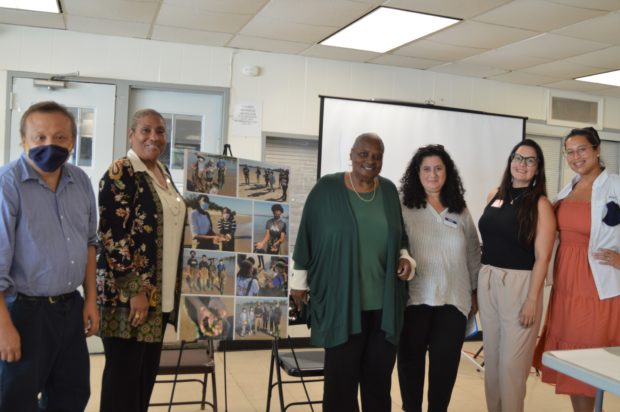

Measuring Sea Level Rise at Coney Island Creek
On the final day of the workshop, teachers visited Coney Island Creek — the last remaining creek in Brooklyn whose waters flooded homes during Sandy — for a resilience tour led by Dr. Brett Branco, Director of the Science and Resilience Institute at Jamaica Bay. Using an Adopt-a-Shoreline field guide designed for the RiSC program, teachers learned about tides, the impacts of erosion, and looked for green and gray infrastructure features: dunes, rip rap, and remnants of an old sea wall. They also learned about the important role that American beach grass plays in stabilizing dunes by creating a natural buffer against storm surge and erosion.
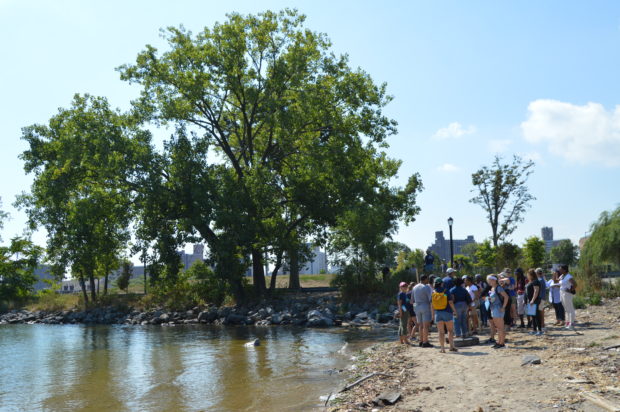
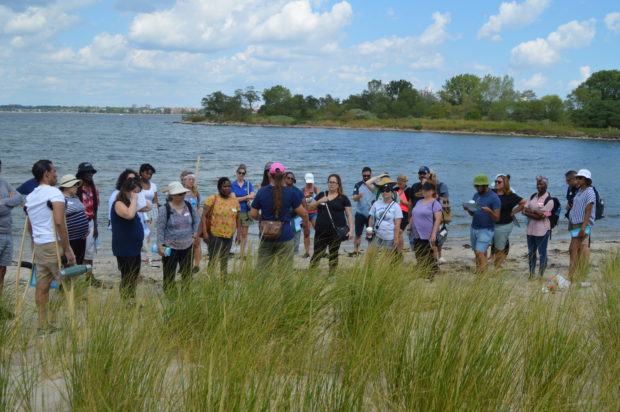
Teachers measured sea level rise in 2070 under various emissions scenarios. The “business as usual,” scenario, marked with a red flag, showed a 3.25 feet sea level rise — a level that would flood the adjacent street and community. This was an impactful visualization of flood predictions using the latest data from the National Oceanic and Atmospheric Administration’s 2022 Sea Level Rise Technical Report.
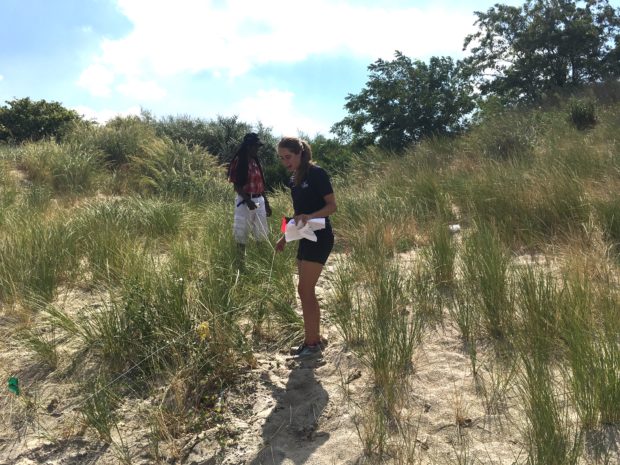
Back in the classroom, teachers put their newfound knowledge to work redesigning the Coney Island coastline using a drag and drop activity from the RiSC curriculum that includes green and gray infrastructure features.
They created sea level rise marker designs, guided by artist Carolyn Hall, who shared examples of ways that artists around the world are creatively visualizing sea level rise data: through paint, decals, QR codes, built structures, light beams, and even dance performances in the ocean.
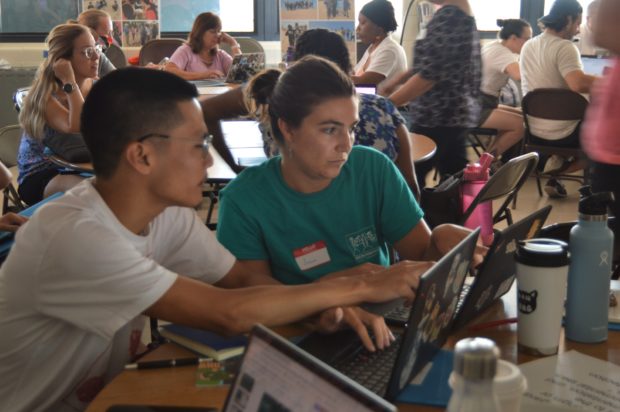
Creating a Community of Practice for Climate and Resilience Education
Finally, teachers were asked to write ‘Postcards From the Future’ to themselves and/or their relatives. Some postcards were optimistic and others less so. The mental and physical health impacts associated with the climate crisis are real, for adults and students alike. The RiSC program strives to provide educational programming that is both empowering and hopeful and the curriculum offers spaces for teachers and students to discuss their climate anxiety.

When asked for final reflections, two teachers were moved to tears, expressing gratitude that they had found a community of practice around climate education; some forged connections with community residents. A majority of teachers pledged to bring what they had learned back to their classrooms. Some, like Emmy Lee from the Urban Assembly School of Emergency Management, charted out how to integrate climate change content across all of her school’s content areas.

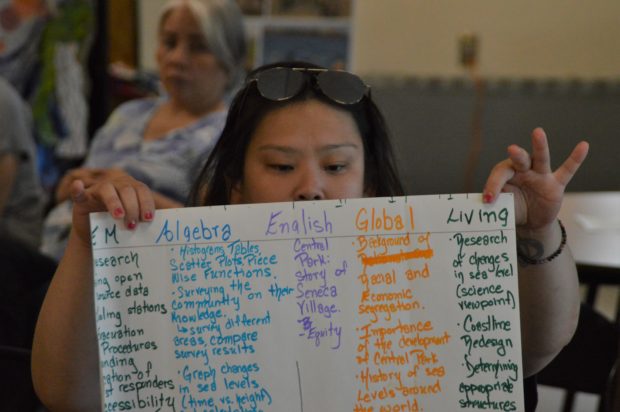
To learn more about the RiSC program visit www.riscnyc.org




















